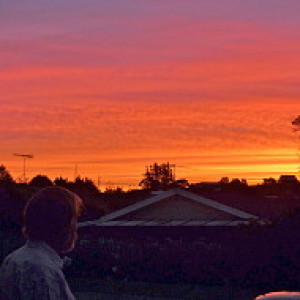One Tree Hill no more
Maungakiekie is the name Maori gave this volcanic cone, which is the second largest in the Auckland field. The highest part of the cone is 183m above sea level, and is made of scoria from the adjacent crater. There are two other craters lower down the southern side of the volcano; both are horse shoe shaped due to lava flows breaching the scoria rampart on the downhill side.
This is one of the oldest volcanoes in Auckland, and its lava flows have been pierced, and then covered by ash and scoria, by other later volcanoes. he top of Maungakiekie was blanketed with up to three metres of ash from Three Kings, 2 km to the west.
Maungakiekie was known as One Tree Hill after a single tree that grew on its summit in the 1840s. Sir John Logan Campbell, a wealthy English born land owner, who was mayor of Auckland and has been known as the father of Auckland, owned this land and planted a group of Monterey pines on the summit. Only one prospered and survived, maintaining the Pakeha name of One Tree Hill.
Maungakiekie was purchased from Maori by Thomas Henry in 1845, and developed into a large estate. However, Governor Grey disallowed the purchase of the cone and the southwestern slopes setting them aside as a public reserve in 1848 as One Tree Hill Domain. Sir John Campbell purchased the remainder of the large estate, and then donated the rest of the the park (now known as Cornwall Park) to the people of Auckland in 1901.
Maungakiekie means the hill of the kiekie (a vine). It is the most extensively terraced of all the Auckland cones, and is one of the largest and most complex pre-European archaeological sites in New Zealand.
Within the park is Te Toka Tuwhenua. This sacred standing stone was of major importance to the original inhabitants. It held the mauri (spiritual essence) of Te Tatua a Riukiuta (also known as Three Kings, another Auckland volcano). Campbell re-erected the stone in Cornwall Park in about 1895. The stone has an interesting history, including being fought for.
In 2000 the solitary pine tree was attacked by a Maori protester with a chain saw, and died. No tree has grown here since.
I was here this afternoon for a training session to learn the new system for supervising trainees. It is a very time consuming process; time which must come by decreasing patient contact. I do hope that it helps to produce good quality psychiatrists.

Comments
Sign in or get an account to comment.


